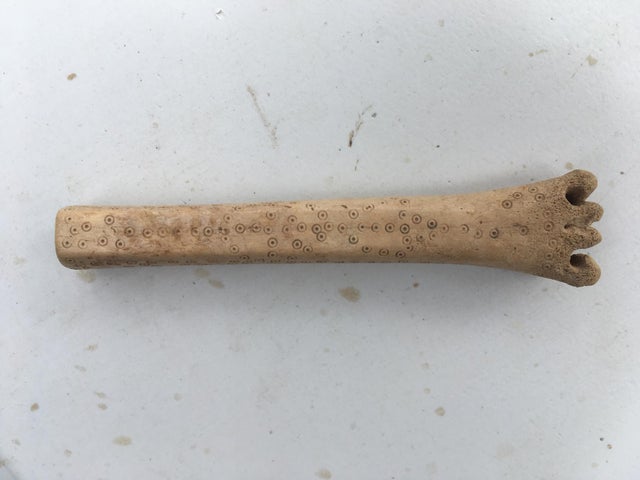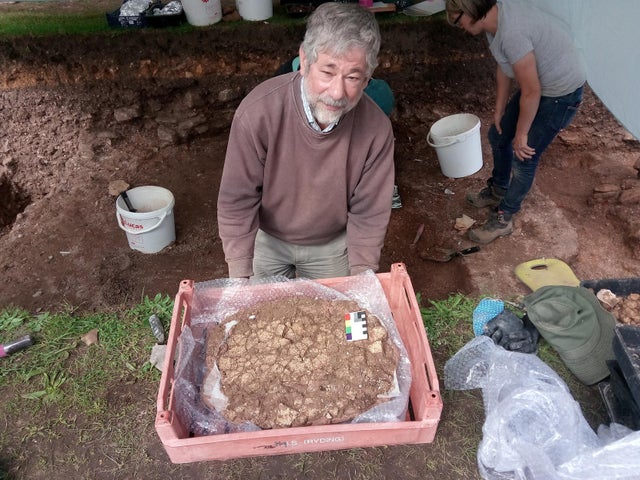‘Imposing’ Roman building found under playing fields in East Yorkshire

An “imposing” late Roman building has been revealed in a dig on playing fields in an East Yorkshire town.
During the two week dig, in Brough – known to the Romans as Petuaria – Several rooms and finds, including a needle case made out of animal bone, a brooch and coins, were uncovered although the remains of a theatre eluded diggers.

The Roman fort was founded in 70 AD and abandoned in about 125 AD and was succeeded by a civilian settlement or a vicus.
Petuaria is thought to have been the capital of a Celtic tribe called Parisi on the last leg of Ermine Street in York.
Dr. Peter Halkon, Senior Archeology lecturer at the Hull University, said the excavation showed that the city was still flourishing at the end of the Roman era.

A possibility is that Petuaria, between the river Humber and a now silted up tidal inlet, continued to be maintained as a naval base.
The leaded bronze crossbow brooch, used to fasten a cloak, is thought to have been the insignia of late Roman soldiers or Imperial officers, and similar examples have been found all the way down Ermine Street.
A buckle, yet to be conserved, could also be military.

Dr Halkon said: “We have a large, well-appointed building organised around a courtyard and what we got in the excavation is part of several rooms of a building, and some kind of courtyard surface, which seems to have been resurfaced on many occasions.
“It had some kind of official function within the town or belonged to someone of high status.”

Different coloured plaster was used on the walls and box-flue tile showed it had a hypocaust or heating system, while the earliest coins dated to empress consort Julia Domna (193 to 211AD), and the latest to the 360s to 380sAD.
There was also a large amount of animal bone and eight kilos of oyster shells, whelks and snails – with one of the oyster shells scratched with a chequerboard design.
An army of volunteers, many from the town and nearby Elloughton, helped out on the dig on the Burrs playing field, along with Phd students from Hull University.
The original goal was to find the theatre mentioned in an inscription found a dig in 1937, which recorded a gift by Marcus Ulpius Januarius of a new stage around AD140.
A survey in 2018 which showed a D shaped building raised hopes of rediscovering it.

Dr Halkon said he hoped to return to the site next year, adding: “We are grateful to the support of Dr Keith Emerick, Inspector of Ancient Monuments, for allowing the dig to go ahead and to York Archaeological Trust which helped with the conservation.
“Without the Playing Field Association we couldn’t have done the dig.”